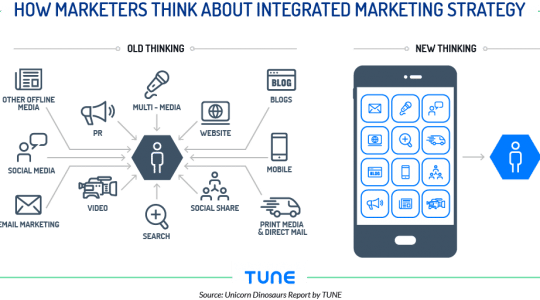Customer Retention. It’s the elusive golden egg that most app developers seem to be reaching for these days. By now most of us know (or at least should know) that it’s significantly more expensive to acquire a customer than it is to keep an existing one. So what should app developers be doing to retain these valuable customers that they’ve already obtained? We’ll start off by giving you a broad overview of steps you can (and should) take, and over the coming weeks we’ll dive in with more details on how to make—and keep—your customers happy.
Regular updates to your app
This can be one of the most valuable and overlooked approaches, especially since Apple’s announcement this past January of locking screenshot changes without an update to your app. App updates should happen at semi-regular intervals—submit them too often and your users will get annoyed; submit them too infrequently and you run the chance of losing your customers between updates. Once every month or two is ideal in our opinion. But what all should these updates include? When you can, you should introduce new features; new levels are also a great way to engage consumers and entice them to come back and use your app again. Bug fixes are another approach and while these will make the regular users of your app happy, it won’t do much bring back users that are starting to drop off, so try to introduce something new each time.
In addition to giving your consumers new tools to play with, submitting regular updates brings your app to their attention through their ‘update apps’ page. And the more interesting you can make these updates, the better; Loren Britcher’s hit app Letterpress gained much of its popularity because of his witty and humorous updates (you can read his most recent update here). I don’t know about you guys, but I get almost as excited to read his updates as I do to play his game.
Make your app addictive
You want your consumers sneaking away to the office bathroom to use your app during the day. Opening your app while sitting at stoplights on their commute home. Reaching for their phones first thing in the morning to check their progress. All of this is much easier said than done; clearly, or you wouldn’t be reading this post right now. But to make them come back regularly, you need to give them a reason to. One of the easier ways to do this, which we covered above, is to introduce new levels and/or features. Giving your customers unexplored territory to investigate is one way to lure them back into your app. Aside from that, what are some other approaches you can take?
Rewarding your customers for regular use (and ‘punishing’ them for staying away too long) is another great way to keep them engaged—this is one of the reasons that the FarmVille games were all so insanely popular. Stay away too long and your crops die; come back regularly and earn more money, more bonuses, and more features. Rewarding with badges and rankings is another great approach, one that Foursquare jumped on early, and one that they continue to expand and improve on. Part of the reason I use Foursquare so much is to try and oust my boyfriend as mayor of some of our favorite haunts.
Keep your users interested and engaged
Your app should challenge your customers enough to keep them interested, but not so much to discourage them from coming back. A great example of this is the popular What’s the Word from RedSpell. For those unfamiliar with the game, users are presented with a set of four related pictures, and you have to puzzle out the one word ties them all together. Some of the combinations are fairly easy, but I’ll admit that I’ve been stumped by some of them too. The easy questions make me feel smart and cleaver; the more difficult ones sometimes result in me closing the app and thinking about it for a while until I have time to go back and play. So not only am I thinking about the app when not using it, but I’m also looking forward to returning to it and solving more puzzles. Finding this balance between challenging and simple is part of what lends to RedSpell’s success with this game.
Build a strong social community
Developing solid relationships with your customers is important to keeping them around, and social media outlets like Facebook and Twitter are at the center of this. Social media shouldn’t be an afterthought or an add-on once your app is developed, but should be integrated into it from the beginning. Make it easy for your customers to link to their Facebook and Twitter accounts; enable them to tweet/post from your app about their progress and accomplishments (insert another nod to Foursquare on this one), and reward them with extra levels, points or bonuses for talking about your app. Also, don’t be shy about giving your followers a little something extra for following you; sneak peeks on upcoming releases, input on improvements or updates to your app, even exclusive in-app upgrades for staying engaged with you are all great approaches. Using social media for your customer support is fantastic too (even if that isn’t the method of communication they used to reach out to you)—not only do they love the shout-out, but it also shows all of your other followers how quick you are to fix problems your customers are having. Just don’t forget to keep your tone personal and human—you don’t want to sound like a paid worker bee sitting in front of a computer churning out generic responses, you want to sound like a person who is interesting enough that your followers will want to engage with.
We’re not reinventing the wheel with these approaches—many app developers have used these approaches and seen positive results from them. But we think it’s important to keep thinking about them, regardless of what stage you’re at in your app. Ask about how you can tailor these into your own app—which approaches are easy for you to implement, which will take a little more time, and which do you think will be most successful with your target audience? Once you’ve had a chance to get a clearer picture for how these will work with your app, you’ll be able to dive deeper (and more successfully) into each approach.
Read Part Two of our series, all about Social Media Engagement
Author
Becky is the Senior Content Marketing Manager at TUNE. Before TUNE, she handled content strategy and marketing communications at several tech startups in the Bay Area. Becky received her bachelor's degree in English from Wake Forest University. After a decade in San Francisco and Seattle, she has returned home to Charleston, SC, where you can find her strolling through Hampton Park with her pup and enjoying the simple things in life.

![MobileBest: Why Mobile-First Is Not Enough [Forrester Report]](https://www.tune.com/wp-content/uploads/2014/05/10271381_567497496692301_6627834864492579971_o-540x300.jpg)


Leave a Reply
You must be logged in to post a comment.